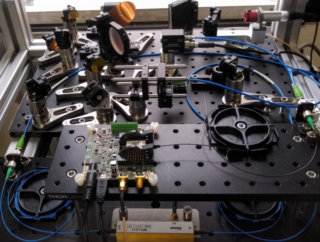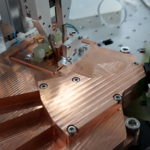Open path near IR laser dispersion spectrometer for methane monitoring

Monitoring methane emissions is essential to develop accountable, trusted greenhouse gas emission mitigation strategy. Based on its expertise in laser dispersion spectroscopy, the Spectroscopy Group is developing a new near-IR instrument for sensing atmospheric methane: ‘LOLIPOP’ [Locked Lasers for an Integrated Path Optical Probe] as part of an Innovate UK project in partnership with MIRICO. Taking advantage of mature technology developed for telecommunications, this sensor uses fibre-coupled components, allowing a compact, rugged and low-power instrument, still offering an attractive cost/performance trade-off.
The instrument uses a waveguide electro-optic modulator (EOM) to inscribe frequency sidebands on near-IR laser radiation. This multi-frequency light is then couple into free-space and directed out of the instrument and into the open path for atmospheric measurements. At the end of the desired open path, the laser beam is then retro-reflected back to the instrument, where it is collected and focused onto a fast photodiode. The detected signal contains RF beat frequencies formed from the interaction of the various frequency components inscribed by the EOM. As the laser radiation is scanned over a molecular resonance the phase of these beat frequencies varies – this is the signal used for molecular detection.
Initial field trials are currently underway at the Harwell campus, with an atmospheric absorption path of 180 m. Once the detection sensitivity has been calibrated, the LOLIPOP instrument will be packaged and prepared for further field trials at a range of locations.
 Previous Post
Previous Post